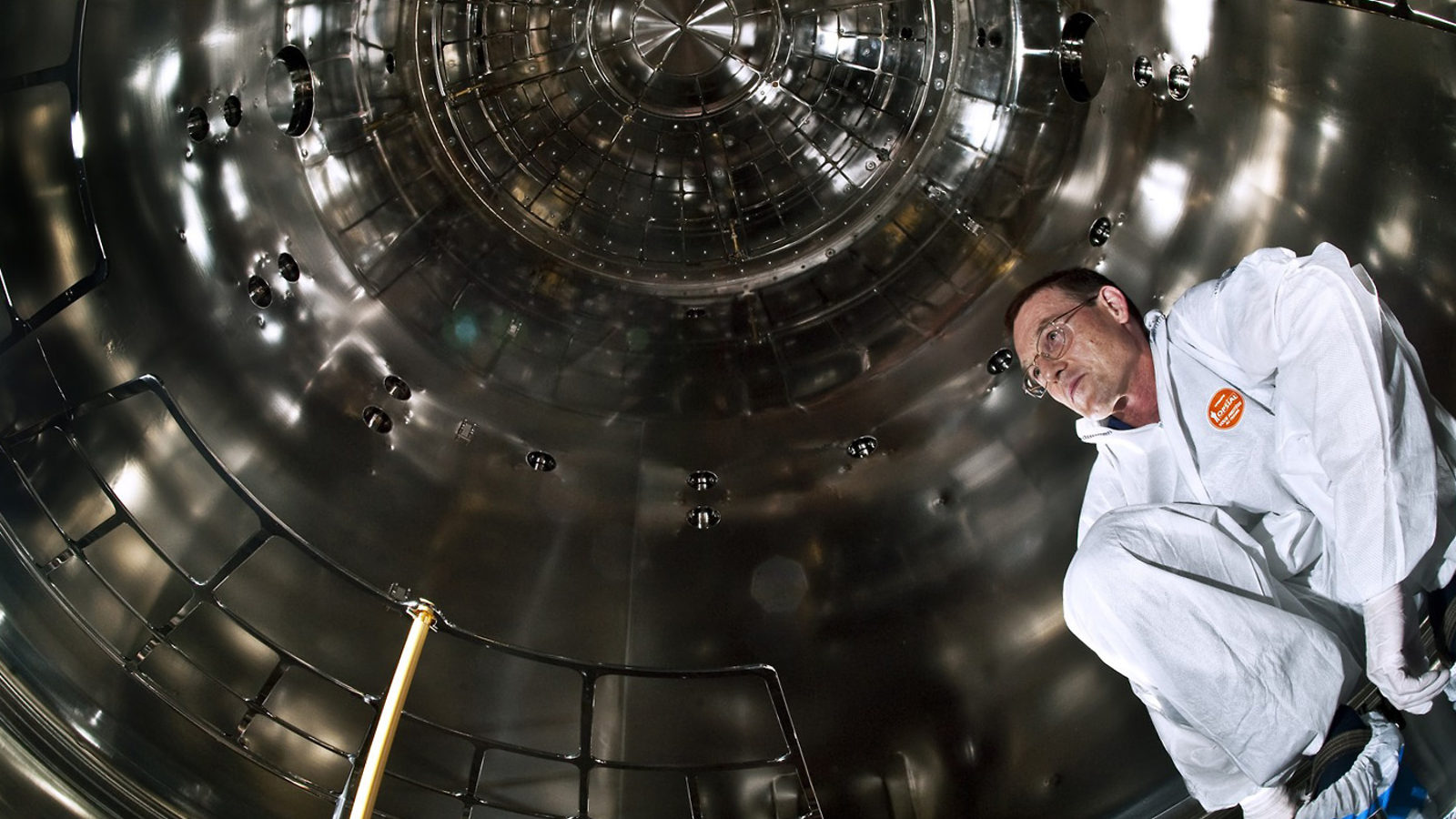CERN’s fundamental physics research helps us solve the mysteries of our universe. Now, even our understanding of the sky is a little clearer thanks to a new result from CERN’s CLOUD experiment.
The CLOUD experiment recently uncovered a reaction that creates tiny particles that form the seeds for clouds. This discovery, published in Nature on October 7, could help scientists build better climate models.
The experiment was designed to study the effect of cosmic rays on cloud-formation, "but in the process we built a chamber that can answer a lot of unknowns about aerosols and clouds,” says Jasper Kirkby, who leads CLOUD. “What’s really remarkable is that these processes are very poorly understood at the fundamental microphysical level and yet so important for the climate.”
Water vapor condenses to form cloud droplets on tiny liquid or solid particles in the atmosphere called aerosols.
“All cloud droplets form on a seed aerosol particle,” Kirkby says. “Water cannot condense spontaneously in the atmosphere.”
Fifty percent of aerosols are terrestrial—originating from sources like sea spray and dust storms. But the other 50 percent are ethereal—created in the sky by the condensation of trace vapors. What these ethereal aerosols are made of, how they form and their influence on the climate is not well understood, according to the Intergovernmental Panel on Climate Change.
Clouds have both a warming and cooling effect on the planet. They reflect warming rays from the sun away from the Earth, but they also absorb heat emitted from the Earth’s surface and radiate some of this heat back down. The current overall effect of clouds is to cool the Earth, according to the IPCC report.
The CLOUD experiment studied the role that nitrogen-containing compounds called amines play in aerosol particle formation. Amines are produced by both natural processes and manmade processes, such as farming, and exist in the atmosphere at miniscule concentrations—a few amine molecules per trillion air molecules. CLOUD researchers found that, despite their scarcity, amines readily form stable aerosol particles with sulfuric acid, which is also present in the atmosphere at about one molecule per trillion air molecules. The experiment found that the rate at which amine and sulfuric acid molecules form aerosol particles in the lab matches the rates observed in the atmosphere—suggesting that amines are a major contributor to the mysterious ethereal aerosols.
“This is the very first time—in the laboratory or in the atmosphere—that we have observed atmospheric particle production and know exactly what molecules are involved,” Kirkby says. “However our measurements leave open the possibility that the formation of aerosols in the atmosphere may also proceed with other vapors.”
The CLOUD experiment uses a specially designed ultra-clean chamber to simulate and control atmospheric conditions. It creates ultra-pure air by mixing nitrogen and oxygen from cryogenic liquids and, after adding water, introduces trace amounts of other atmospheric vapors. The scientists then track the types of particles that form and measure the rate of production.
CLOUD researchers simulate the ionizing radiation of cosmic rays by bombarding the chamber with pions produced by the CERN Proton Synchrotron, a key part of CERN’s accelerator complex that also gives a boost to particles bound for the Large Hadron Collider.
The result showed that the amines and sulfuric acid form such stable particles that the introduction of cosmic rays has little effect on the particle formation. But Kirkby notes that the effect of ionization may be different for other aerosol particles, so the influence of cosmic rays on clouds and climate remains an open question.







